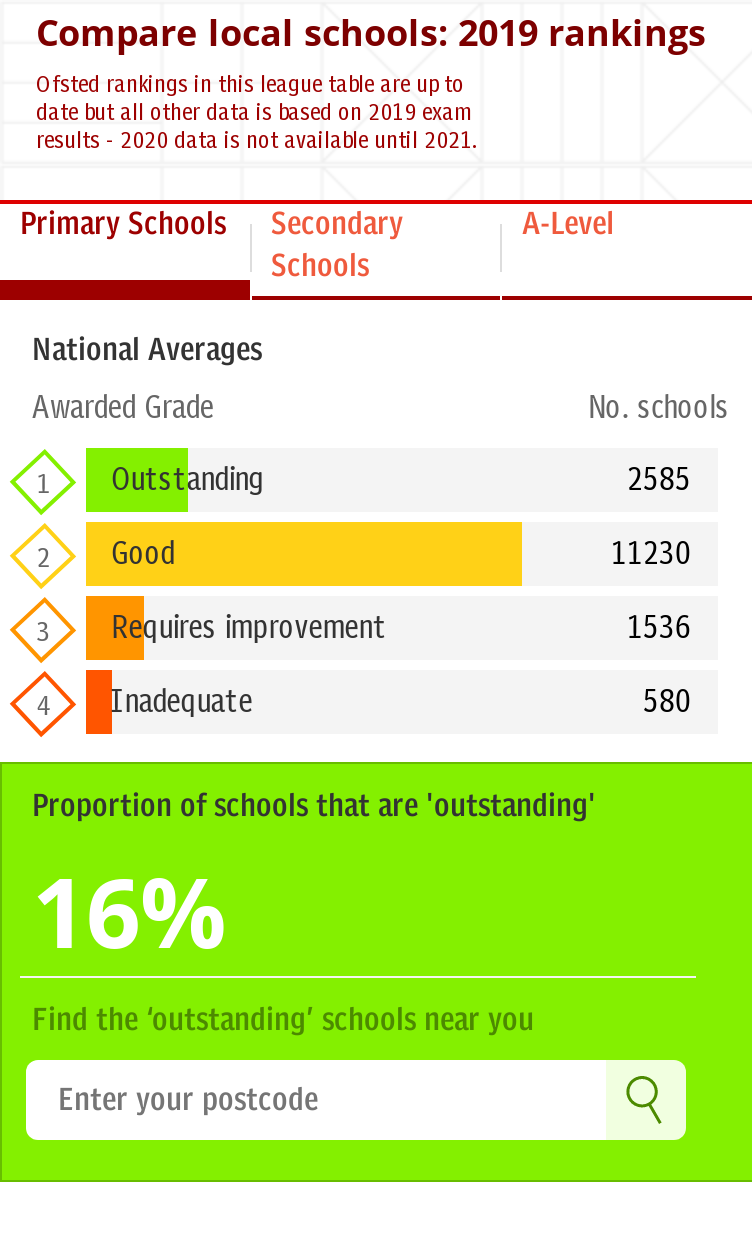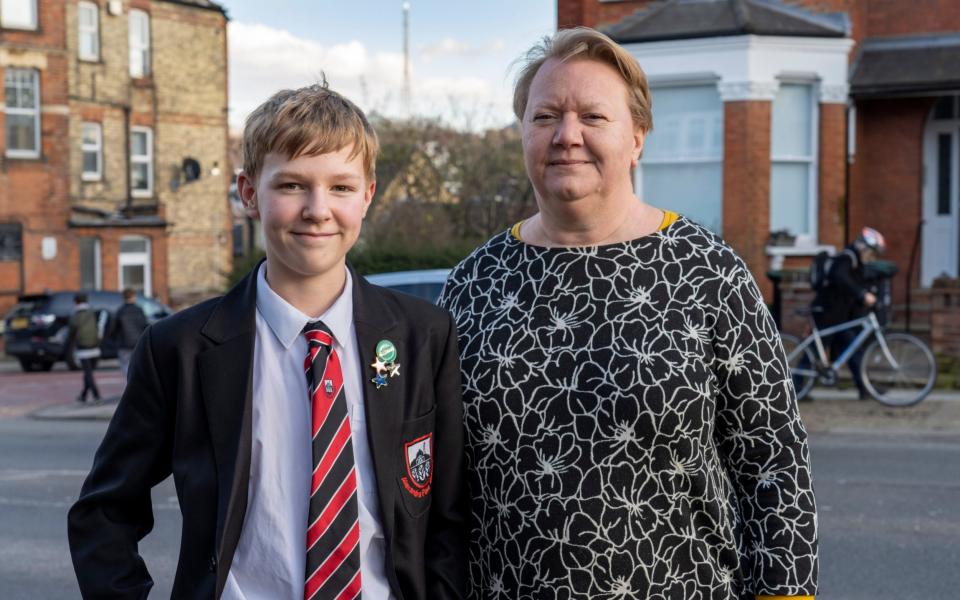Why lockdown has intensified parents' property catchment area wars

The combined chaotic experience of lockdown, homeschooling and homeworking had a huge effect on the property market.
While demand for more space and gardens has soared, top of the priority list for many parents was snapping up a home in the right school catchment area – even if they had to pay a premium.
Christopher Dewe, of estate agent Knight Frank, said lockdown “has focused parents’ minds on which schools delivered the best during a challenging period”. Competition to buy in certain catchment areas has intensified.
Buyers are now motivated by the difference in the quality of distance learning: while children at some primaries were largely being fed on a daily diet of one-dimensional worksheets, other schools had online lessons and lots of contact time.
This demand, particularly from Londoners, for more space and great schools has created property hotspots. For Simon Ashwell, who covers Surrey for estate agency Savills, buyers from London now make up 68pc of his clients, up from 27pc before lockdown. “North Surrey is riddled with schools but there’s a particular pressure to be within the catchment area of Cleves School in Weybridge,” he added.
Emma Seaton of buying agent Prime Purchase said she had been rushed off her feet with buyers coming down the A3 in search of more space and a rural lifestyle. A number are also taking their children out of the state sector and going private. “There’s a prep school in Hampshire where, of the 70 new students joining this year, 60 have transferred from the state sector,” she added.

An age-old problem
Competition to be in the right catchment area and get into the best school is, of course, not new. As the country got to grips with life in lockdown, thousands of families in England failed to secure a place for their child in their first choice of school when places were offered in March and April this year.
Applications for places increased in London, reversing last year’s trend. Of the 97,300 pupils who applied for a primary school place, fewer than 85pc got into their first choice, and 5,000 children did not get into any of their top three schools. Birmingham also experienced an increase in applications, which has had a similar effect on the success rate of applications. The percentage of families getting their first choice was 88pc.
Families living in the North East have the best chance of getting into their first-choice primary school, according to Government figures. In Redcar & Cleveland and Northumberland the figure is more than 97pc. Both of these areas are predominantly rural, suggesting it is easier to get into the top-choice primary school for families who don’t live in city centres.

At the other end of the spectrum, parents living in the London boroughs of Kensington & Chelsea and Hammersmith & Fulham have the lowest chance of getting into their first-choice school; both have been among the worst performers in this measure since records began in 2014.
The only area outside London in the bottom 10 was Windsor & Maidenhead. Many parents in the latter borough compete to get their children into Holyport College, a co-educational state day and boarding school near Maidenhead that opened in 2014 and is sponsored by Eton College. It is rated “outstanding” by Ofsted, and its admissions follow the parish boundaries of the town of Bray, and afterwards are allocated on distance.
It was the sole reason for Mario Munich, with his wife Betty-Ann and 16-year-old daughter Amelia, to relocate once the market reopened post lockdown to a four-bedroom house in The Croft, a new-build scheme by Shanly Homes in the nearby village of Binfield. The family previously lived in a two-bedroom flat in Sunbury-on-Thames. “We decided to move to Binfield primarily because our daughter will be attending Holyport College,” said Mr Munich.

Paying a premium
Moving to be near a specific state school is a tried-and-tested method of securing a place – but it’s not a cheap one. Across England, the average sale price close to an “outstanding” rated primary school is £273,000, according to Savills. That is 14pc more than the average price of a home near a school rated “good”, and 27pc more than near one “in need of improvement”.
Some go to extremes to achieve this. Roarie Scarisbrick, of buying agents Property Vision, had a client who was keen to get into Bousfield Primary, in Chelsea, which has a tiny catchment area taking in some of the capital’s most expensive properties. “The houses in the area she was looking cost over £20m; I’m not sure she had really thought it through properly,” said Mr Scarisbrick.
Further research by Knight Frank revealed that families buying in the East Midlands paid the highest premiums for properties within 1km of primary schools rated “outstanding”, at 19pc. It was followed by Yorkshire and the Humber at 18pc.
Shrinking catchment areas
Early this year, a report by the Sutton Trust found that a quarter of high-performing schools took in substantially fewer disadvantaged pupils than live in their catchment area. The reason, according to the 1,500 head teachers surveyed, is partly because some parents are gaming the system.
Tanya Kreisky has been on the losing end of this practice. Born and raised in north London, she runs T&T, a gift shop in Muswell Hill, and has a son, Owen, who has just started Year 9. She said: “We knew Owen would want to go to Alexandra Park School where the majority of his [primary school] classmates would go. We didn’t think it was a problem until we realised that the catchment area was shrinking. Each year as we got closer and closer to applying, it got smaller and smaller.”
The reason is a warning to all parents who play the catchment zone game: reputations of schools change and can do so very quickly. “In the space of a few years, a succession of problems with teachers at the other good secondary nearby meant those that could afford to move piled into the APS catchment,” she said.

It’s a system that is “private by proxy”, added Ms Kreisky. “I grew up here, I’ve lived in the local area forever but that counts for nothing.”
When they discovered that they might miss out on a place, friends came forward with suggestions, some of which amounted to fraud. “It’s not unusual,” said Kreisky. “First, there’s the ‘fake divorce’ where, six months before the school application window closes, one of the couple moves out and rents a flat that just happens to be much closer to the school. Once the place has been secured, the relationship mysteriously improves.”
Ms Kreisky was also advised to move in with her mother, who lives within the catchment area. “But that just struck me as wrong. It’s how I got pushed out of the school and I wasn’t prepared to do that.” Instead, they agreed to go on the waiting list but only found out on the day before term started that they hadn’t got a place.
“That’s another problem with the system: if someone moves into the area after the places have been awarded, they will automatically be put higher on the waiting list if they live closer, regardless of however long others have been on it.”
Have you struggled to buy a home in a particular catchment area or is your local school's catchment area shrinking? Share your experience in the comments section below


